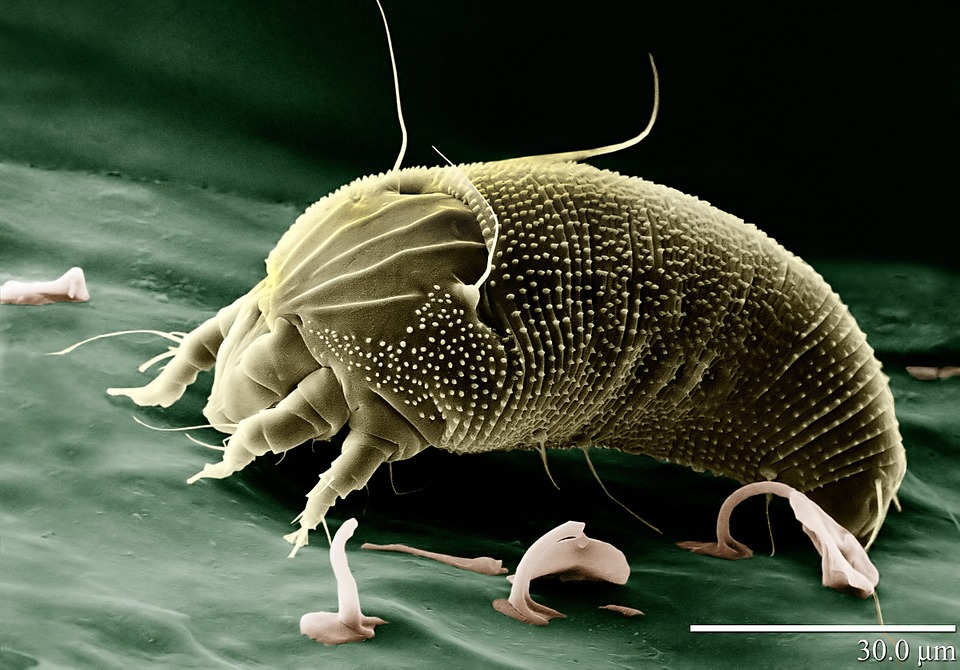Demodex mites are tiny parasites that can inhabit the hair follicles and skin of humans, often without causing noticeable symptoms. However, many people are unaware of their presence and the potential health issues they can lead to. Understanding how to identify if you have demodex mites is crucial for maintaining skin health and overall well-being. In this article, we will explore the signs, symptoms, and diagnostic methods for detecting demodex mites, along with effective treatment options.
Demodex mites, particularly Demodex folliculorum and Demodex brevis, are part of the normal fauna of human skin. They play a role in skin ecosystems, but an overpopulation can lead to skin disorders such as rosacea, blepharitis, and other inflammatory conditions. Recognizing the symptoms early can prevent long-term damage and help you seek the appropriate treatment.
This guide will provide you with detailed insights into how to determine if you have demodex mites, including common symptoms, diagnostic procedures, and treatment options. By the end of this article, you will have a comprehensive understanding of demodex mites and how to manage their presence effectively.
Table of Contents
- Understanding Demodex Mites
- Signs and Symptoms of Demodex Mites
- Diagnosing Demodex Mites
- Treatment Options for Demodex Mites
- Preventive Measures Against Demodex Mites
- When to See a Doctor
- Conclusion
- References
Understanding Demodex Mites
Demodex mites are microscopic arachnids that are naturally found on human skin. They are classified into two main species:
- Demodex folliculorum: Primarily resides in the hair follicles.
- Demodex brevis: Found in sebaceous glands.
While these mites are usually harmless, they can proliferate under certain conditions, leading to skin issues. Factors such as a weakened immune system, hormonal changes, and poor skin hygiene can contribute to their overgrowth.
Lifecycle of Demodex Mites
Demodex mites have a lifecycle that includes egg, larva, protonymph, and adult stages. This lifecycle typically lasts about 14 to 21 days, and they thrive in areas of the skin that are rich in oil, such as the face, forehead, chin, and around the eyes.
Signs and Symptoms of Demodex Mites
Identifying demodex mites involves recognizing their symptoms, which can vary from mild to severe. Some common signs include:
- Redness and Inflammation: Skin may appear red and inflamed, often resembling rosacea.
- Itching and Irritation: A persistent itch can indicate the presence of these mites.
- Flaky Skin: Dandruff-like flakes can develop due to skin irritation.
- Acne-like Bumps: Some people experience breakouts that resemble acne.
- Thinning Hair: In severe cases, hair loss can occur in the affected areas.
These symptoms can significantly impact your quality of life. Understanding these indicators is crucial for early intervention.
Diagnosing Demodex Mites
Diagnosis of demodex mites typically involves a dermatologist's evaluation. The following methods are commonly used:
- Skin Scraping: A small sample of skin is scraped to check for mites under a microscope.
- Biopsy: In some cases, a skin biopsy may be performed to analyze the presence of mites.
- Clinical Observation: A dermatologist may assess symptoms during a physical examination.
It is important to seek professional help if you suspect an infestation, as self-diagnosing can lead to incorrect treatments.
Treatment Options for Demodex Mites
There are several treatment options available for demodex mites, depending on the severity of the infestation:
- Topical Treatments: Creams and lotions containing ingredients like benzoyl peroxide, metronidazole, or tea tree oil can help reduce mite populations.
- Oral Medications: In severe cases, oral antibiotics or ivermectin may be prescribed.
- Good Hygiene Practices: Maintaining cleanliness can help control mite populations. Regularly wash your face and avoid sharing personal items.
Consulting a healthcare provider is essential for determining the right treatment plan tailored to your condition.
Preventive Measures Against Demodex Mites
Taking preventive measures can significantly reduce the risk of demodex mite infestations. Consider the following strategies:
- Maintain Skin Hygiene: Wash your face twice daily with gentle cleansers.
- Avoid Oily Products: Use non-comedogenic skincare products that do not clog pores.
- Wash Bedding and Towels Regularly: Change and wash your bedding and towels frequently to minimize exposure.
Implementing these preventive measures can help maintain a healthy skin environment and reduce the likelihood of infestations.
When to See a Doctor
If you experience persistent symptoms such as redness, itching, or skin irritation that do not improve with over-the-counter treatments, it is essential to consult a dermatologist. Early diagnosis and treatment can prevent further complications and help restore skin health.
Conclusion
In summary, demodex mites are common inhabitants of human skin, but an overgrowth can lead to various skin issues. Recognizing the signs and symptoms is crucial for effective diagnosis and treatment. By maintaining good hygiene practices and seeking professional help when needed, you can manage the presence of demodex mites and promote healthier skin.
If you've found this article helpful, please leave a comment or share it with others who may benefit from this information. Explore our other articles for more insights into skin health and wellness!
References
- American Academy of Dermatology. (2022). Demodex mites and skin health.
- Journal of Clinical and Aesthetic Dermatology. (2021). The role of Demodex mites in skin diseases.
- National Institutes of Health. (2023). Diagnosis and treatment of Demodex infestation.
You Might Also Like
Chase Atlantic Controversy: Unpacking The Issues Surrounding The BandTitus Welliver Family: A Deep Dive Into The Life Of The Acclaimed Actor
Exploring The Family Of Jang Hyuk: A Deep Dive Into His Personal Life
Understanding ZZZ Ages: A Comprehensive Guide
Sneaky Links Meaning: Understanding The Trend In Online Culture
Article Recommendations
- Daniel Ezra Wife
- Jane Fonda Short Haircut
- Vegamovies Nl Hindi Movies
- Henry Olyphant
- How Old Is Travis Tritt
- Alaina Ellis Leak
- Suicide Bridge Restaurant Md
- Jason Simpson Killer
- Deephotlinks
- Ravi Shastri New Wife


